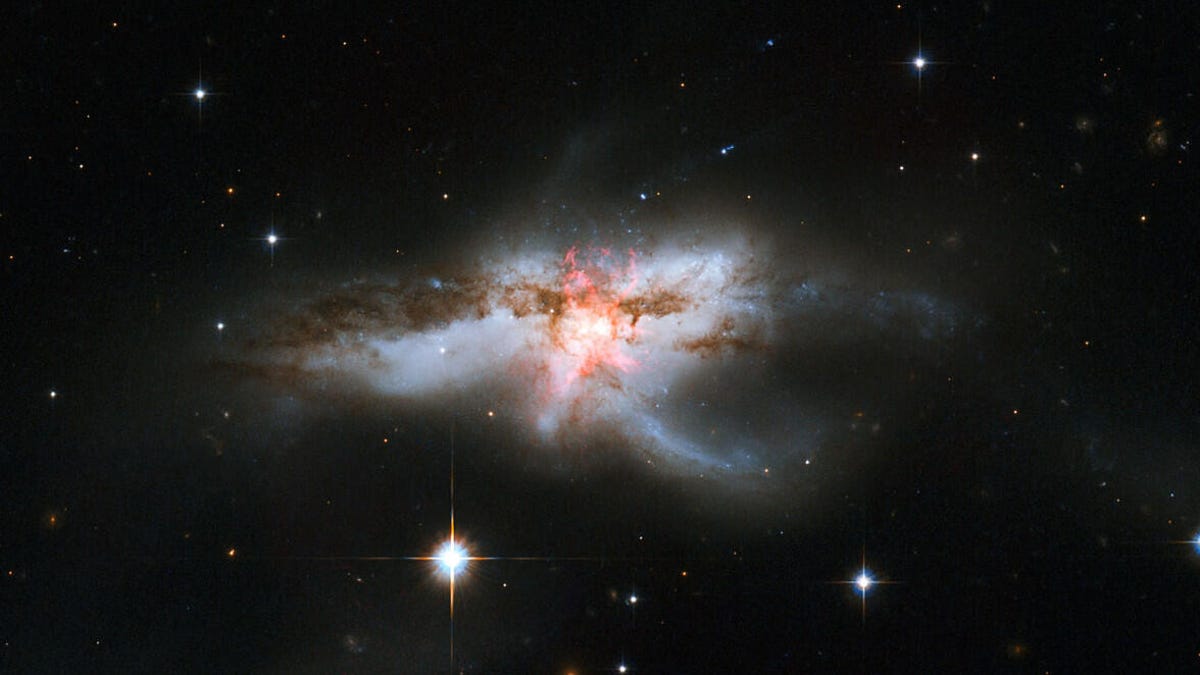Three supermassive black holes found at center of unusual, smashed galaxy
A "buy two, get one free" deal on supermassive black holes at NGC 6240.

NGC 6240 was birthed when two galaxies collided.
Huge, spiral galaxies like our home galaxy -- the Milky Way -- look like beautiful, starry pinwheels, but not all galaxies are formed with such artistic sensibilities. Take, for example, NGC 6240: An irregular galaxy approximately 300 million light-years from Earth that looks like a smashed egg and was formed when a pair of galaxies collided with one another.
Astronomers have long believed that collision resulted in NGC 6240 housing two supermassive black holes, but new research suggests they were wrong: NGC 6240 has three supermassive black holes at its galactic center.
The first-of-its-kind finding, published in the journal Astronomy & Astrophysics in October, suggests that NGC 6240 may have been formed by a collision between three galaxies. Using the Very Large Telescope (VLT) in Chile, the research team were able to examine the motion and mass of the black holes at the center of NGC 6240.
Mammoth galaxies generally host supermassive black holes, monster black holes with about 100 million times more mass than the sun, in their center. Those black holes keep galaxies like the Milky Way in constant motion, spinning billions of stars and planets around the galactic center, like a delightful cosmic carousel. NGC 6240 is a bit different.
It's huge, has an unusual shape and is incredibly bright. Astronomers suspect its intense light comes from the huge amount of dust, intense star formation and supermassive black holes that make the galaxy up. Previous studies have examined the galaxy in great detail and found the two supermassive black holes pumping out a ton of light -- but the new work, by researchers at the University of Göttingen and University of Pottsdam in Germany, shows an extra cosmic beast lurking in the galaxy.
"Through our observations with extremely high spatial resolution we were able to show that the interacting galaxy system NGC 6240 hosts not two -- as previously assumed -- but three supermassive black holes in its centre," said Wolfram Kollatschny, an astronomer at the University of Göttingen and lead author on the study.
Astronomers have a decent idea about how some galaxies form and evolve over time. For instance, the Milky Way is also thought to have devoured a smaller galaxy billions of years ago, which gives rise to two distinct populations of stars showing up around its outer edges. However, for massive galaxies like NGC 6240, the formation and evolution has been a bit of a mystery.
According to Peter Weilbacher, a co-author of the study from the Leibniz Institute for Astrophysics at Potsdam University, this is the first indication of simultaneous merging processes of several galaxies and their central black holes.

